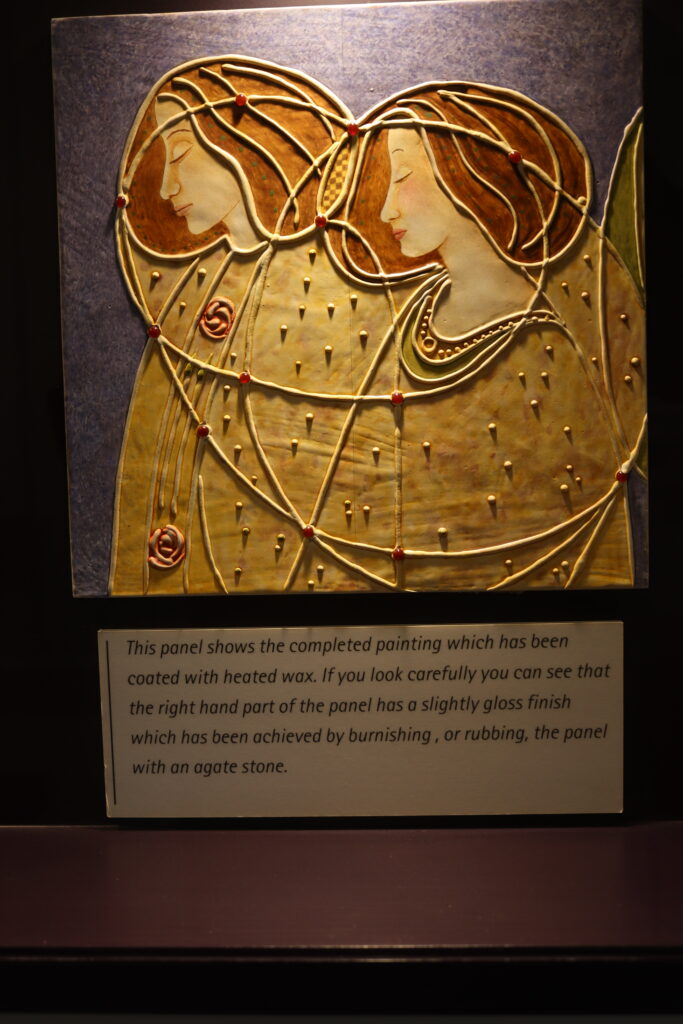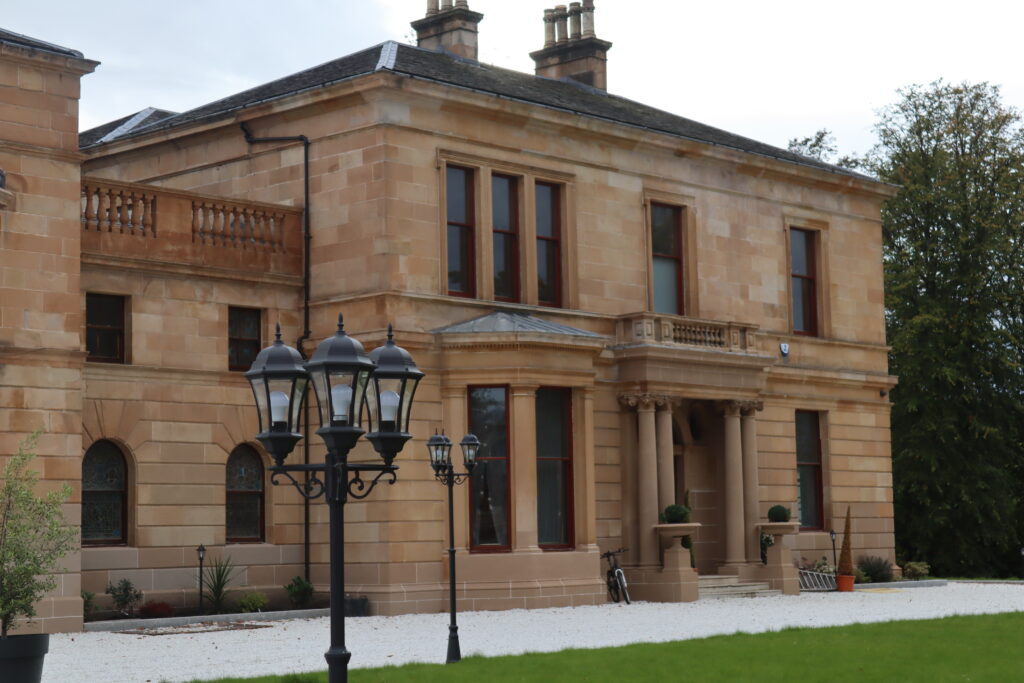It is often said that visiting a building that carries the hallmark of the Scottish designer Charles Rennie Mackintosh is an experience of refreshment and renewal. This was certainly the case for the House For An Art Lover situated in Glasgow’s South Side in Bellahouston Park. Mackintosh submitted his designs in response to a competition that appeared in 1900 in the German design magazine Zeitschrift fur Innendekoration based on ‘Haus eines Kunstfreundes’ (Art Lover’s House). The Mackintosh couple had travelled to Vienna in August 1900 after their wedding and it is likely that they learned of the competition while on the continent. Mackintosh’s submission was awarded a special prize of 600 Marks for its quality and originality of design although for various reasons it was not considered eligible for the main competition award.
It was to be many years later in1986, however, that work on constructing a building based on the designs of Mackintosh would actually begin. The final building would not be completed until 1996. In the design of the modern building, the structure had to include significant departures from the original concept to ensure its commercial viability. This is reflected in inclusion of a cafe/restaurant, retail facilities and infrastructure to support meeting rooms and conference events. In addition, space has also been allocated to document aspects of the built structure and its interior design.
‘Core’ features of the site include the Music Room, the Dining Room, the Oval Room’ and the Margaret Macdonald Room where the latter mainly provides details of the designs of Mackintosh’s wife and how they were brought to life in the new building.

The Music Room is south facing and designed to admit significant levels of light all year. At one end of the room is a piano that visitors can play and at the other a decorative fireplace with embellished Mackintosh motifs. The Dining Room provides a contrast of dark wood panelling and centre table with light carpet and light from upper windows. One thought is that this contrast would highlight the fabric of the dresses of female guests. The Oval Room is on a smaller scale but successfully creates a welcoming environment. A novel pair of facing seats at the main window echoes a similar feature in the upper hallway of the Mackintosh house – The Hill House – in Helensburgh.

The House For An Art Lover, however, by all accounts, works well as a functioning space for social interaction and provides insight into the strands of architectural design and interior decoration that create harmony within both individual and shared experience.

The exhibits on display such as the designs of Margaret Macdonald share details of design and elements of construction which encourages the viewer to think of their own creations within the Art Nouveau style. In this way new generations of artists pick up sparks of inspiration within the so called ‘Glasgow style’.

While art historians generally indicate the Art Nouveau period ended with the outbreak of World War I in 1914, the core elements of the patterns and rhythms of Nature, which were an essential aspect of the Art Nouveau experience, continue to be a central strand of contemporary artistic expression.

For a detailed description of the construction of the House For An Art Lover, the reader is directed to the book ‘Building the dream’ by Graham Roxburgh who was instrumental in its planning and construction. The inspiration for the building of the House For An Art Lover came from the work of Graham Roxburgh who had been involved in aspects of refurbishment of nearby Craigie Hall which included various features designed by Mackintosh. It is, however, challenging to track down copies of the book.

The House of an Art Lover is an international attraction. I was informed by a native of New York inspecting the house that there was nothing like it in her home city. While it is of course of value to become a Mackintosh ‘boffin’ and become immersed in all the correct information about historical events and creative origins, the simple reality of the core design themes is that they reflect the collective inspiration of two people deeply in love.

As a footnote, it is relevant to be aware that the many elements of Mackintosh’s submitted plans for House for an Art Lover were not able to be incorporated into the present building. Perhaps one day a more expansive representation will transform from out the the ether into physical form. Who can tell where? We all need to be immersed in creative, supportive environments as revealed by Charles Rennie Mackintosh and Margaret Macdonald.